The window glass is broken. Angular, sharp fragments have fallen to the ground. Some lean on the windowsill. But what should be transparent is not. The pieces of glass make up, like a puzzle, the landscape that can be seen beyond the window. The image is duplicated.
From an everyday scene: the red curtains, the wooden frame, the meadow, the trees, the clear sky, Magritte establishes a contradiction between painting and reality, reflection and landscape. The painting breaks and the observer is forced to stop.
The René Magritte exhibition at the Thyssen Museum, which will remain in its rooms between September 14 and January 30, offers a journey to a universe in which, as in the works of Lewis Carroll, the paradox becomes real when passing through the mirror of the canvas.
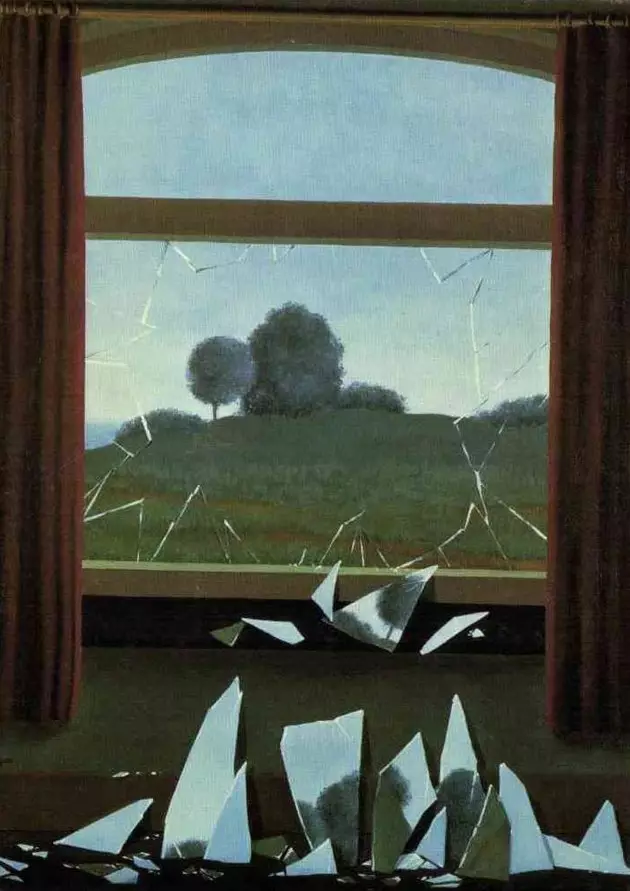
'The key of the fields'.
The title of the sample, Magritte's machine , it is not accidental. In 1950, together with a group of Belgian surrealists, the artist created, within the catalog of a supposed cooperative society called The Manufacture of Poetry, a series of products, including a “universal picture-making machine”. This machine was meant to create an unlimited number of “thinking pictures”.
In them Magritte combined an insistent repertoire of objects and characters in disturbing compositions. The paintings are “thinking” because they provoke a shock in the perception of the observer. The detonation raises a question mark and leads to reflection.
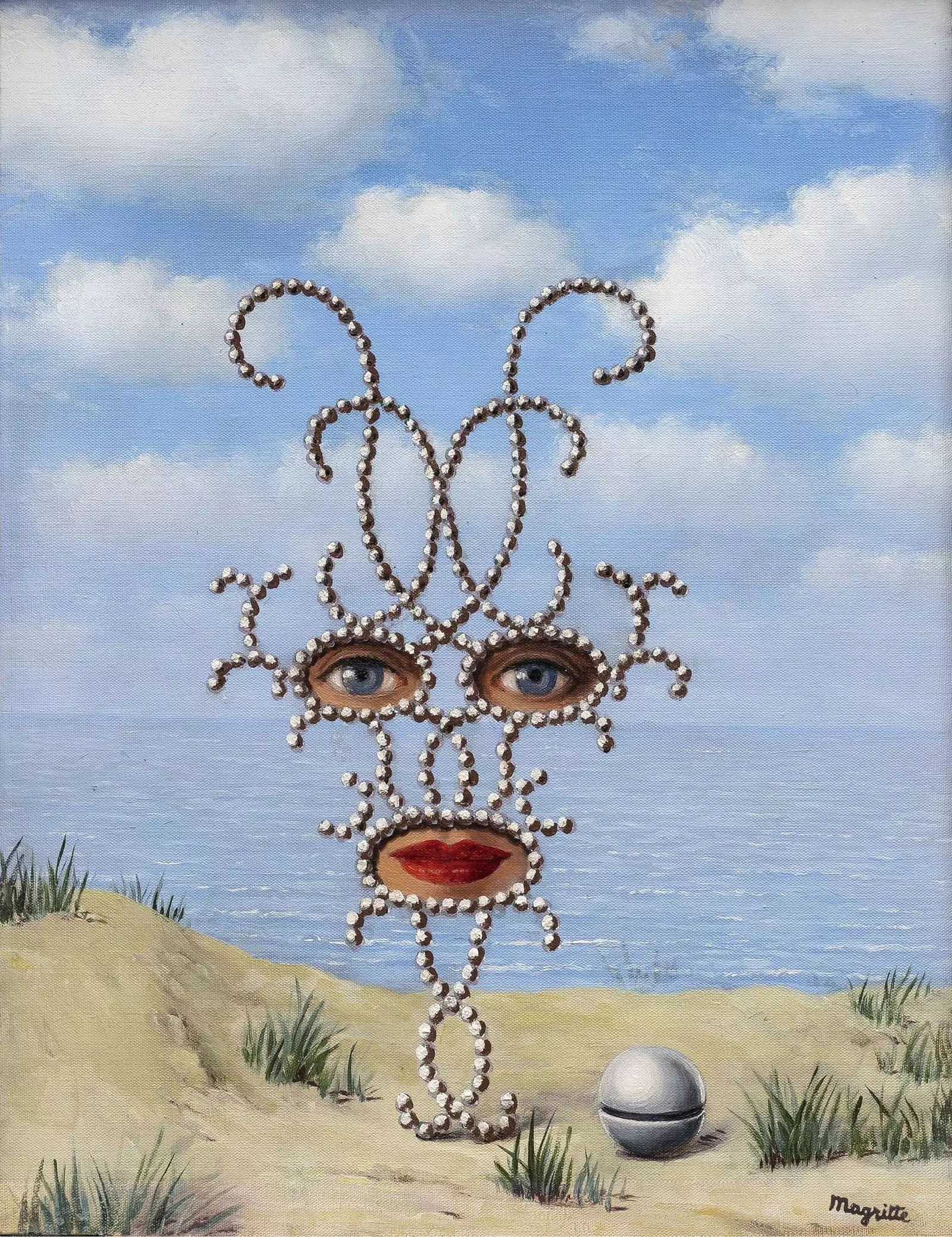
Sheherazade.
In one of the exhibits, Magritte depicts himself painting his model in the air of the room. The bourgeois environment increases the disturbing load of the image. The painter creates a painting within the painting and he stars in an impossible scene.
Magritte's father worked in a shoe store in a Walloon village near Brussels. The suicide of his mother when René was twelve years old opened a crack in the security atmosphere of the quiet Belgian town. When his body appeared in the Sambre river, his dress covered his face like a veil, a motif that would persist in the artist's imagination.
The items that come from the Magritte machine they underwent few changes throughout their trajectory. The most famous is the man dark suit with bowler hat, a garment that the artist himself wears in many of his photographs.
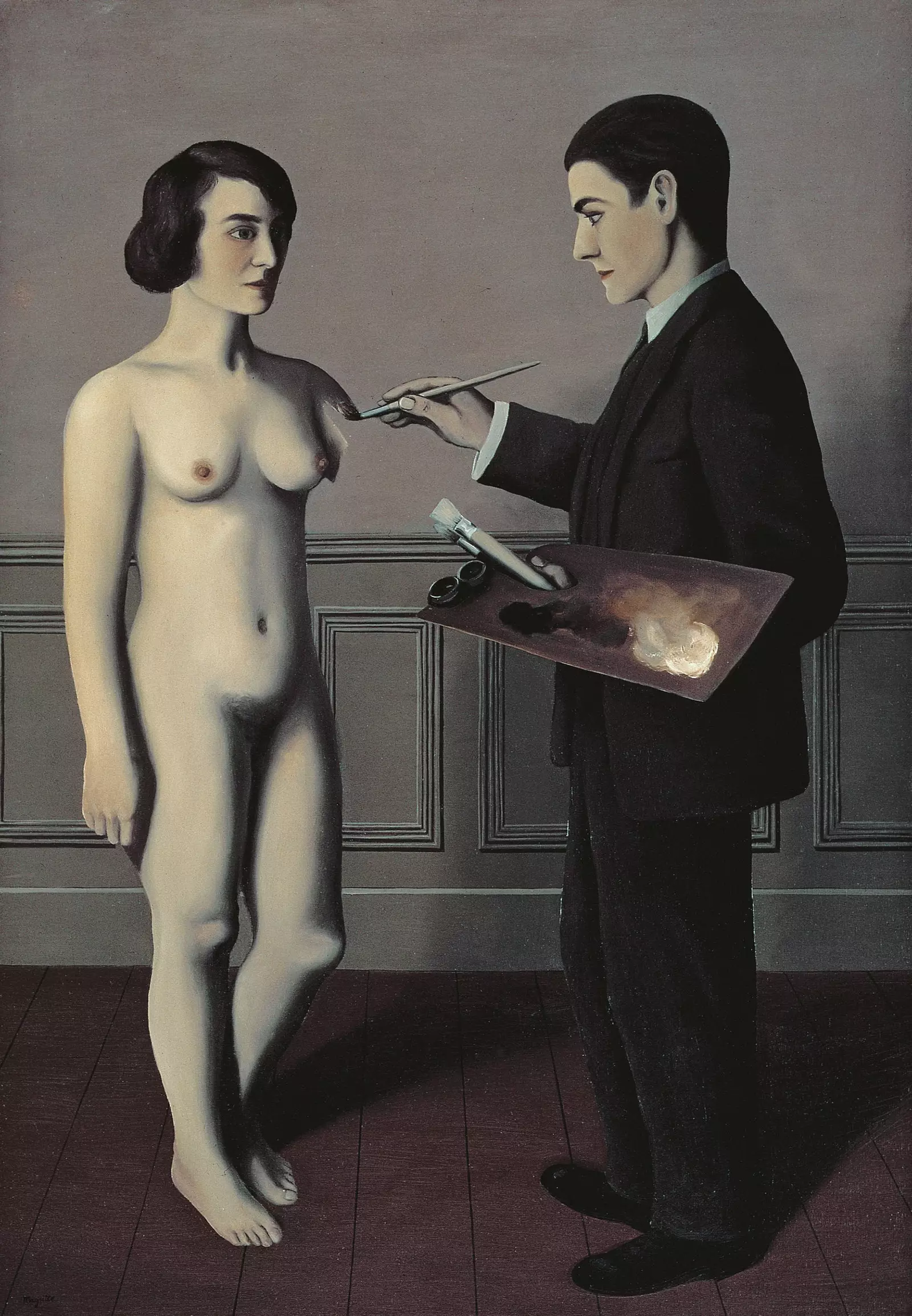
'Attempt at the impossible'.
The character embodies middle-class urban worker. Faceless, indistinguishable, he is a gray, flat man, devoid of his own personality. The painter places him in unlikely situations. on the construction site the great century, his back rises behind a wall in a wide meadow surrounded by woods, a common landscape in Belgium. But the sky is hidden by a white plaster ceiling with geometric moldings.
The man with a bowler hat projects the viewer into the work, he makes him participate, places him beyond the limit between the real and the unreal that the surface of the painting supposes.
After the harsh criticism caused by his first exhibition in Brussels, Magritte traveled to Paris, where he joined André Breton's surrealist group. In 1929, he participated in the Goemans gallery exhibition together with Dalí, Max Ernst, Miró and Picasso.
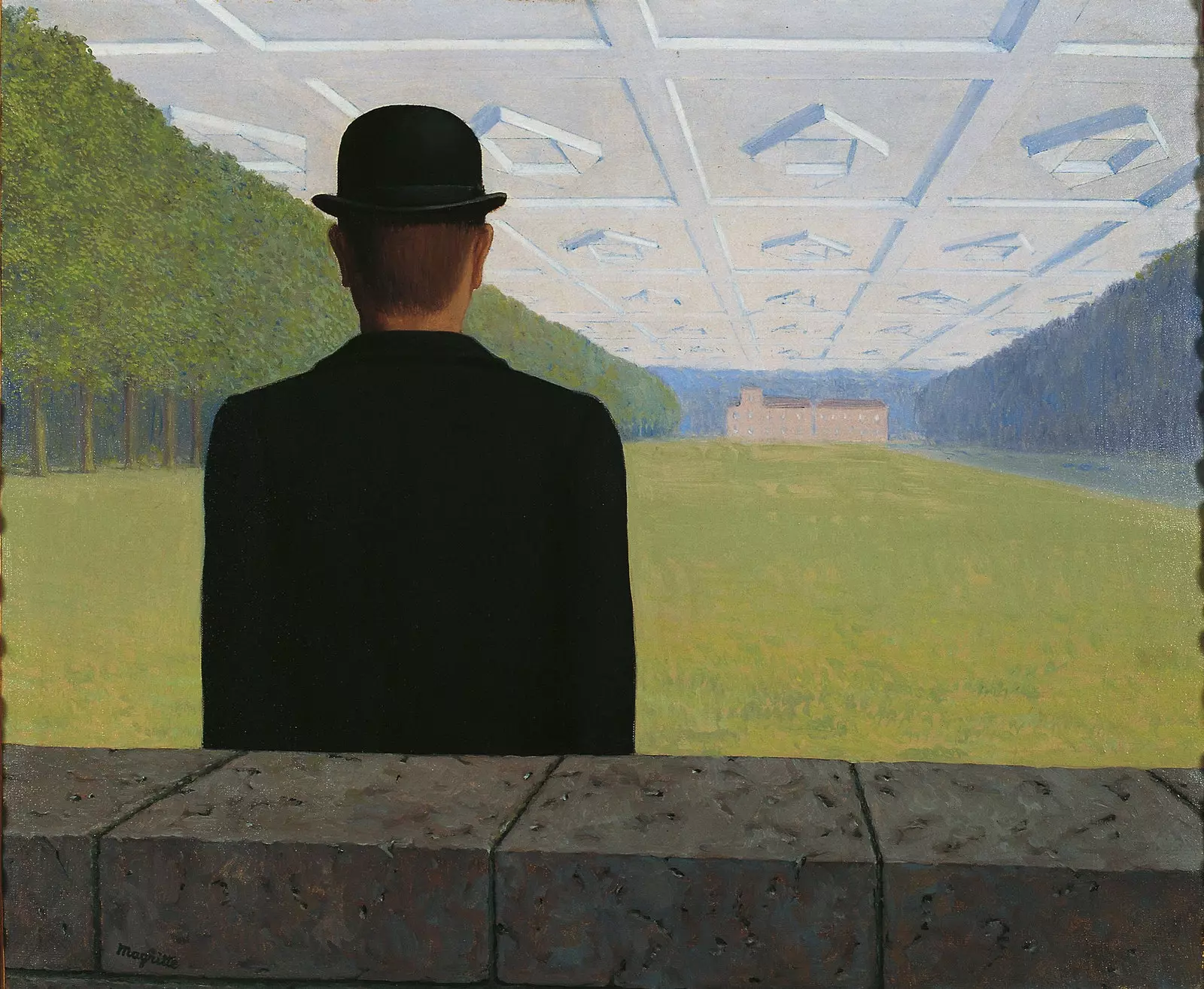
'The great century'.
That same year he painted The tradition of images in which a pipe appears under the text: this is not a pipe. Opposite the surrealist nucleus, oriented to the oneiric illusion of Ernst and Dalí, and to the more or less automatic expression of Miró, Magritte entered the labyrinth of contradiction.
The pipe affirms a visual presence that the text denies. When asked by a critic, the artist replied: "Try filling it with tobacco. The pipe is just representation, like broken glass."
From surrealism, Magritte retained playfulness and irony. He started from the collage by emptying the silhouettes of the objects and characters from it. He reversed the background and the figure. A) Yes, the birds of him contain the sky in a poetic twist.
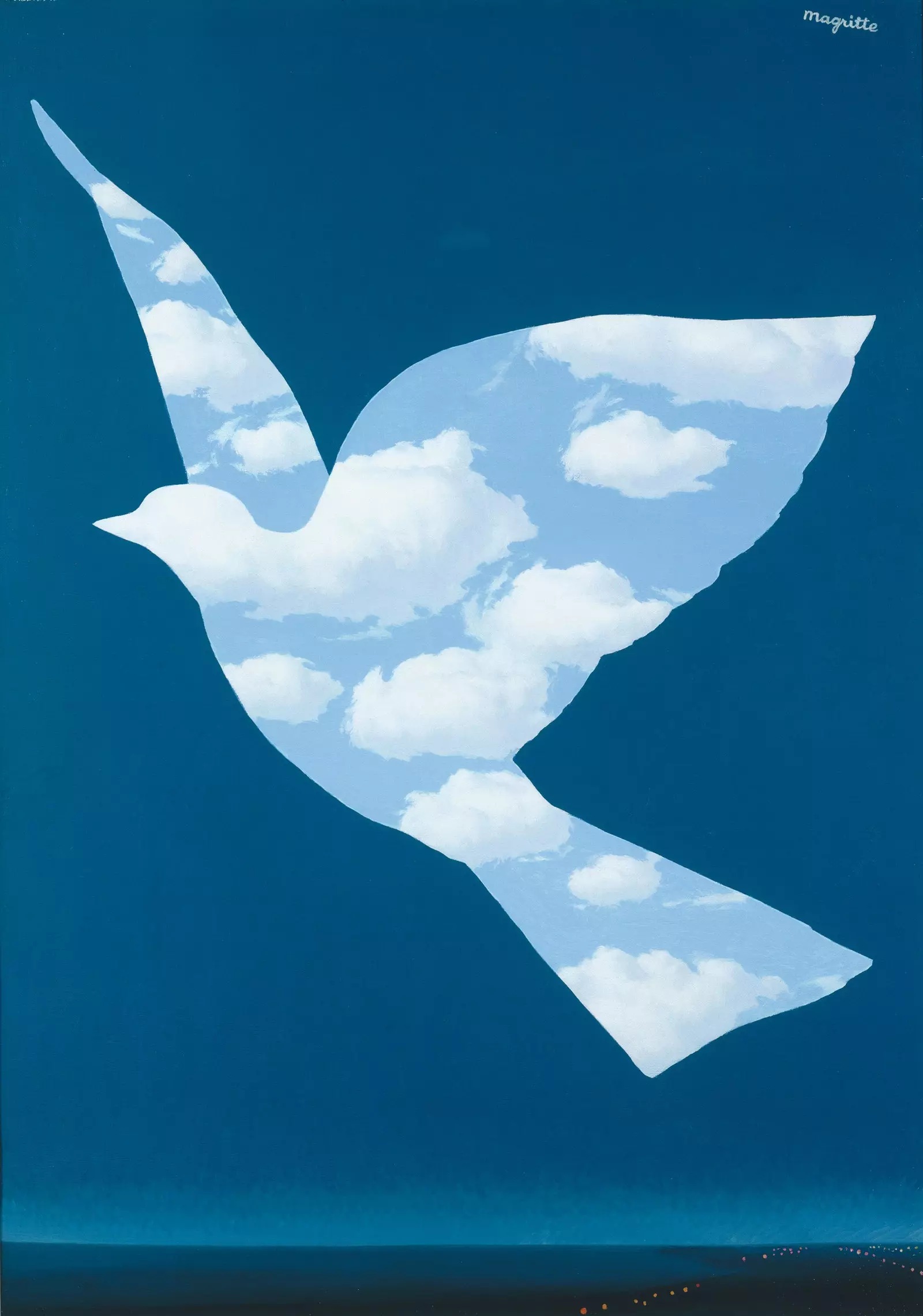
'The bird of the sky'.
The echoes of collage are manifested in The blank signature . A woman rides through a forest on horseback. The vision deceives and disrupts the solid and the hollow. The trunks become transparent, while the air, opaque, hides the figure.
In some of his works, an everyday object becomes by altering its scale or in a mismatch with its surroundings. In these images the influence of Lewis Carroll it becomes clear. Like Alice biting the cookie, a naked body grows and a stone becomes gigantic until it suffocates the space of the room.
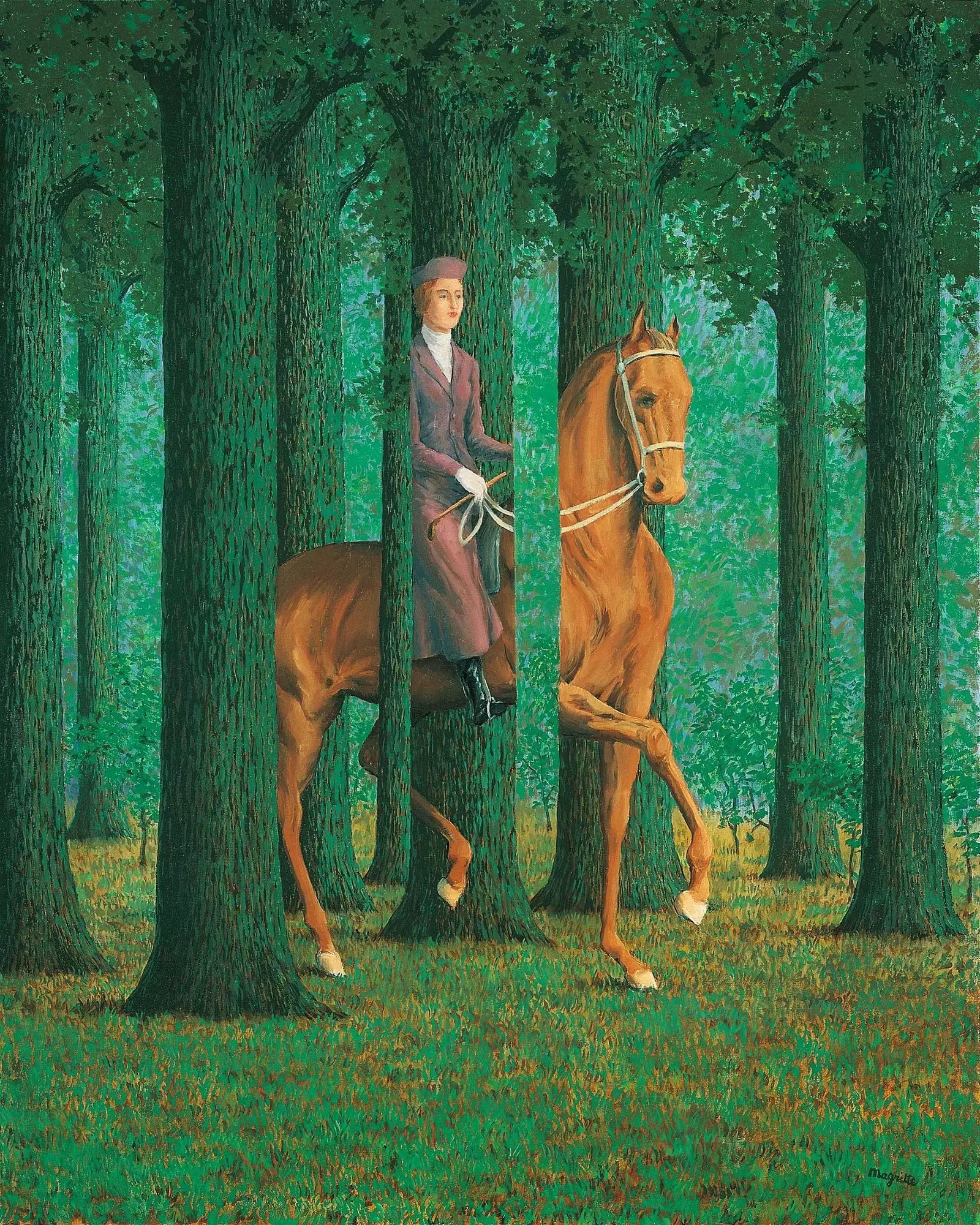
'The signature in white'.
Magritte goes into the inexplicable, subverts order and shows the hidden part of the iceberg. His images confirm a suspicion, an intuition: physical laws suffer unsuspected alterations, vision deceives and the banal sometimes hides the fantastic.
His works break the limits between the real and the represented, between the possible and the impossible, they tear the veil of mystery that hides the everyday.
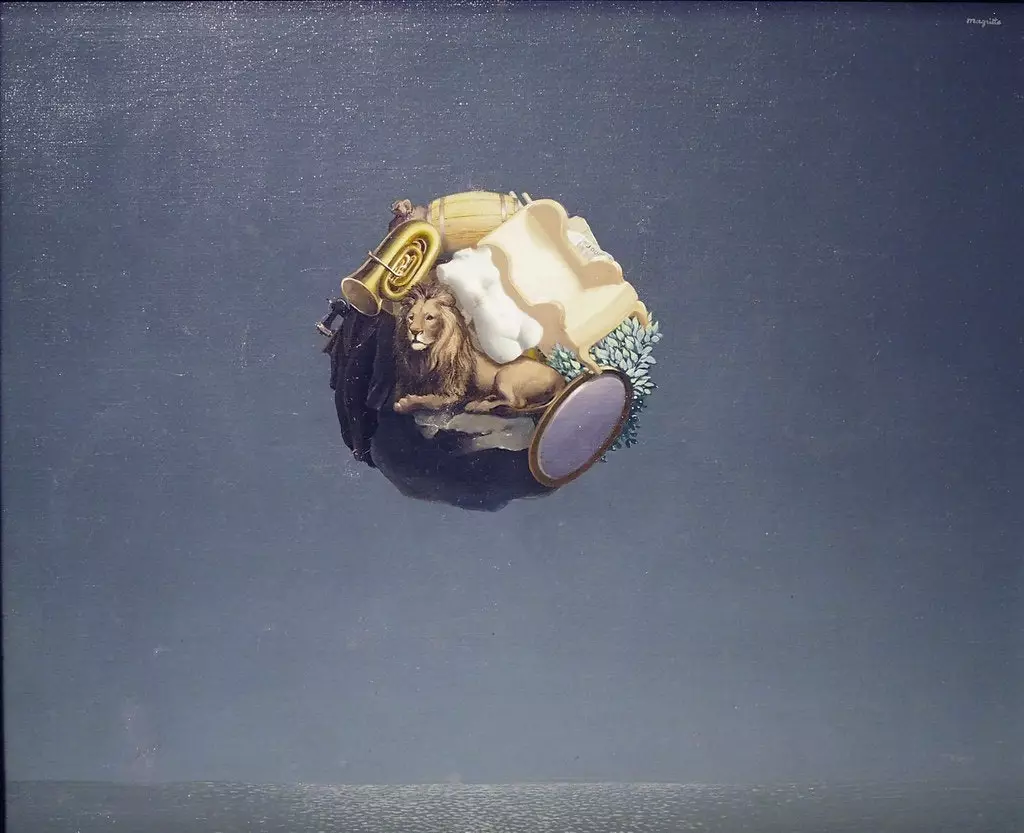
'The anniversary'.
